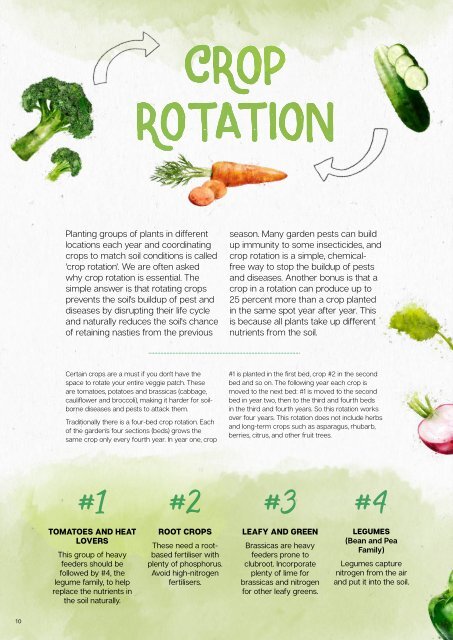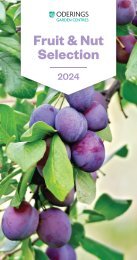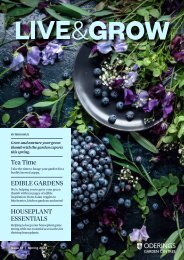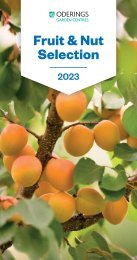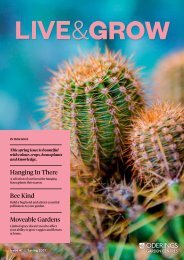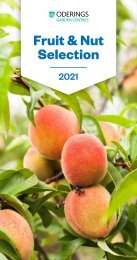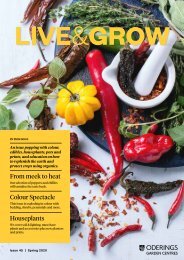Live & Grow Issue 50
Hot topics for gardeners and houseplant enthusiasts. Find out what plants, products and growing methods are best right now.
Hot topics for gardeners and houseplant enthusiasts. Find out what plants, products and growing methods are best right now.
You also want an ePaper? Increase the reach of your titles
YUMPU automatically turns print PDFs into web optimized ePapers that Google loves.
Planting groups of plants in different<br />
locations each year and coordinating<br />
crops to match soil conditions is called<br />
'crop rotation'. We are often asked<br />
why crop rotation is essential. The<br />
simple answer is that rotating crops<br />
prevents the soil's buildup of pest and<br />
diseases by disrupting their life cycle<br />
and naturally reduces the soil's chance<br />
of retaining nasties from the previous<br />
season. Many garden pests can build<br />
up immunity to some insecticides, and<br />
crop rotation is a simple, chemicalfree<br />
way to stop the buildup of pests<br />
and diseases. Another bonus is that a<br />
crop in a rotation can produce up to<br />
25 percent more than a crop planted<br />
in the same spot year after year. This<br />
is because all plants take up different<br />
nutrients from the soil.<br />
Certain crops are a must if you don't have the<br />
space to rotate your entire veggie patch. These<br />
are tomatoes, potatoes and brassicas (cabbage,<br />
cauliflower and broccoli), making it harder for soilborne<br />
diseases and pests to attack them.<br />
Traditionally there is a four-bed crop rotation. Each<br />
of the garden's four sections (beds) grows the<br />
same crop only every fourth year. In year one, crop<br />
#1 is planted in the first bed, crop #2 in the second<br />
bed and so on. The following year each crop is<br />
moved to the next bed: #1 is moved to the second<br />
bed in year two, then to the third and fourth beds<br />
in the third and fourth years. So this rotation works<br />
over four years. This rotation does not include herbs<br />
and long-term crops such as asparagus, rhubarb,<br />
berries, citrus, and other fruit trees.<br />
#1 #2 #3 #4<br />
TOMATOES AND HEAT<br />
LOVERS<br />
This group of heavy<br />
feeders should be<br />
followed by #4, the<br />
legume family, to help<br />
replace the nutrients in<br />
the soil naturally.<br />
ROOT CROPS<br />
These need a rootbased<br />
fertiliser with<br />
plenty of phosphorus.<br />
Avoid high-nitrogen<br />
fertilisers.<br />
LEAFY AND GREEN<br />
Brassicas are heavy<br />
feeders prone to<br />
clubroot. Incorporate<br />
plenty of lime for<br />
brassicas and nitrogen<br />
for other leafy greens.<br />
LEGUMES<br />
(Bean and Pea<br />
Family)<br />
Legumes capture<br />
nitrogen from the air<br />
and put it into the soil.<br />
10


